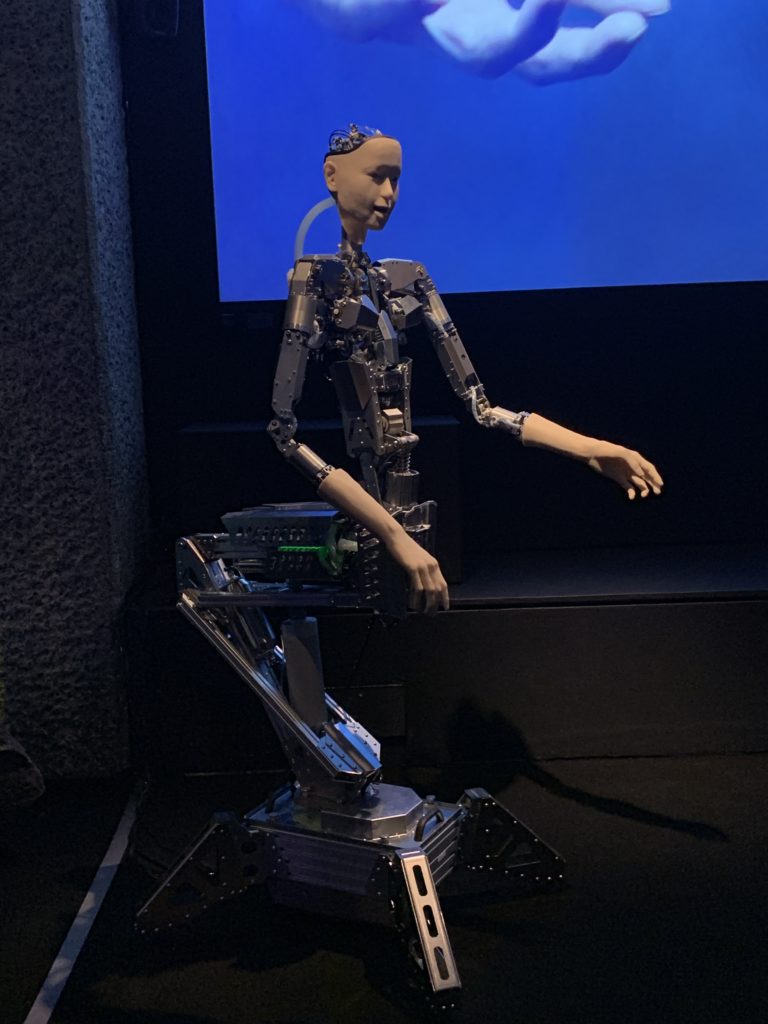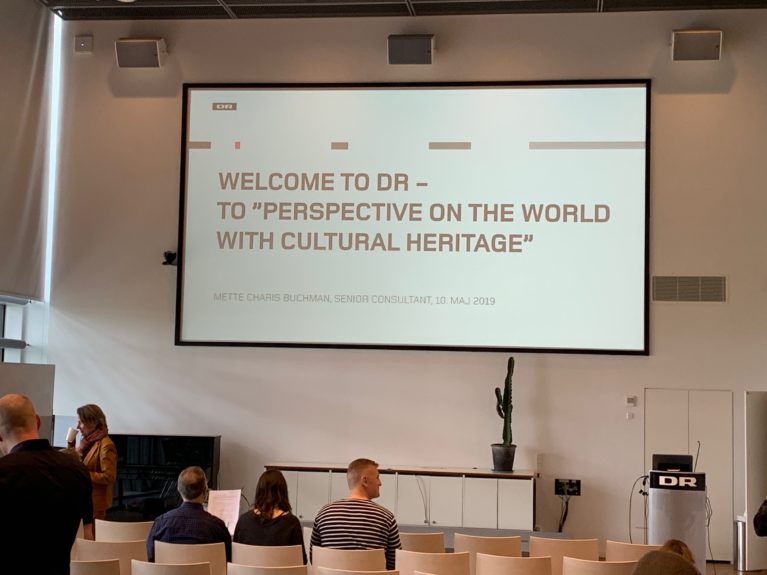AI: More Than Human is a new exhibition at the Barbican which promises an unprecedented survey of creative and scientific developments in artificial intelligence, and if we’re prepared to stretch our understanding of the term AI to encompass sculpture and images generated by neural networks, mythical creatures made of animated clay, geared mechanisms that encrypt messages. and anthropmorphic cooking tools then it certainly delivers.
The Curve exhibition space is so packed with artefacts, artworks and artificiality that it begins to overwhelm the visitor. It’s not surprising that one of the exhibits, programmed to tune in to faces in front of its camera, was apparently distracted by the images on the screens of other exhibits, as they are only partially hidden by the gauze screens that separate this rich and complex collection of thematically and chronologically ordered artefacts.

Alter 3 Robot: AI More than HUman
The Alter 3 robot is not alone in being not knowing where to look. As I walked through the space I was constantly distracted and diverted, turning from screen to object to interactive exhibit as I wondered exactly what story was being told here.





